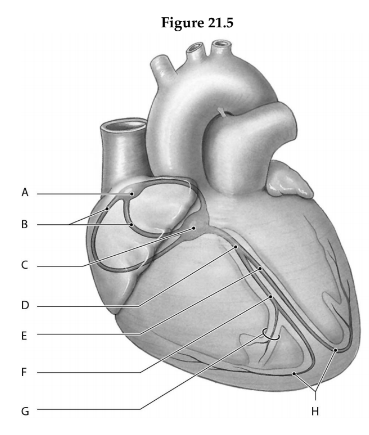When a person receives intravenous fluids to help build up blood volume, why is it important for the fluid to be isotonic?
What will be an ideal response?
Intravenous fluids must be isotonic to prevent the cells from losing or gaining water. If the solution was hypertonic, the cells of the body would lose water, shrink, and possibly be harmed. On the other hand, the introduction of hypotonic fluid would cause the cells to swell and tissues to rupture.
You might also like to view...
Using the figure below, identify the labeled part.

1. Label A: ______________________________
2. Label B: ______________________________
3. Label C: ______________________________
4. Label D: ______________________________
5. Label E: ______________________________
6. Label F: ______________________________
7. Label G: ______________________________
8. Label H: ______________________________
Since articular cartilage is avascular, what provides oxygen and nutrients and removes metabolic wastes?
A) ligaments B) synovial fluid C) tendon sheaths D) bursae
At the base of a nail, keratinized skin called the cuticle is also called the
A) eponychium. B) lunula. C) hyponychium. D) cerumen. E) phalanx.
Which bones form the bony part of the nasal septum? Choose all that apply.
A. Vomer B. Ethmoid C. Sphenoid D. Nasal